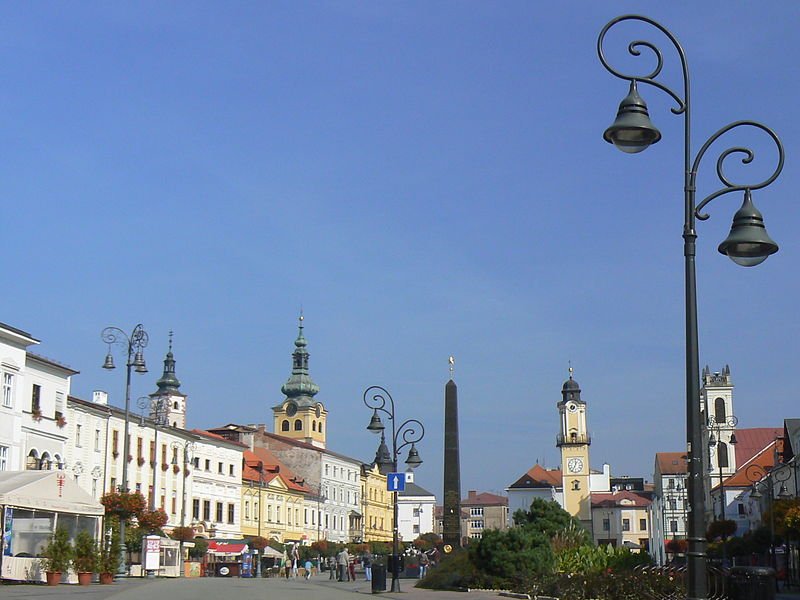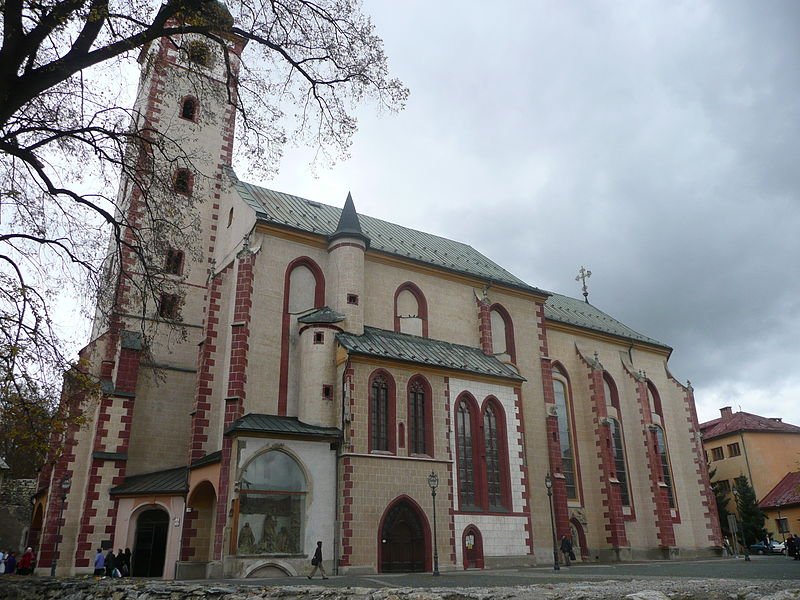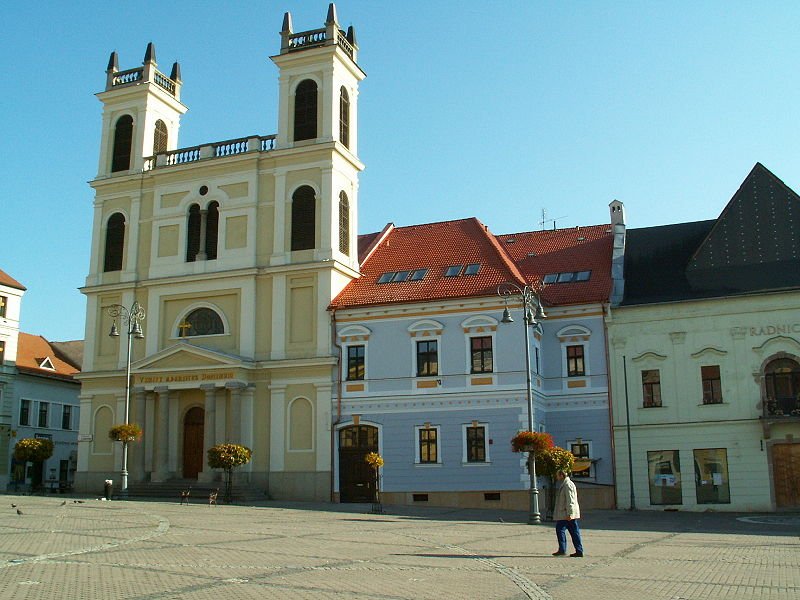 Banska Bystrica, Slovakia
Banska Bystrica, SlovakiaSource: https://commons.wikimedia.org/wiki/File:Banska-Bystrica-centre-5.jpg
Author: Vassia Atanassova

Banská Bystrica is a city in the central part of Slovakia. It covers 103.37 sq km (39.91 sq mi) and has a population of 80,000 people (2011 estimate). It is the 6th most populous municipality in Slovakia. The city is located in the long, wide valley carved by the Hron River. Surrounding it are several the mountain ranges including the Low Tatras, the Vel'ká Fatra and the Kremnica Mountains.
 Church of the Assumption, Banska Bystrica
Church of the Assumption, Banska BystricaSource: https://commons.wikimedia.org/wiki/File:P1020590.JPG
Author: Xpucmo

Banská Bystrica is 362 m (1,188 ft) above sea level. It is about mid way between Bratislava and Košice. The city experiences the continental climate. Summers here are hot while winters snowy. Hottest months are July and August, when the average high temperature reaches 26°C (79°F). Coldest months are January and February, when the average low temperature drops to -6°C (20°F). July is the wettest month in Banská Bystrica, receiving 6.02 cm (2.37 in) of rainfall.
The area surrounding Banská Bystrica is rich in minerals, particularly silver, which has been mined here since prehistoric times. The area has inhabited by the Puchov culture, a Celtic tribe, in the 3rd century BC. They were replaed by the Quadi, a Germanic tribe, during the Roman Era. The Slavic tribe took over the area in the 9th century.
Banská Bystrica was established on the site of the Slavic settlement. It was a mining town, as were the previous settlements. By the 15th century, the mining industry has reached an advanced stage. The main mining company in Banská Bystrica was Ungarischer Handel, which employed the most sophisticated mining technologies at that time, and even provided medical care for its one thousand workers.
 Church of St Francis Xavier, Banska Bystrica
Church of St Francis Xavier, Banska BystricaSource: https://commons.wikimedia.org/wiki/File:N%C3%A1m.SNP_R.k.-kostol_sv.Franti%C5%A1kaXaversk%C3%A9ho.jpg
Author: Miroslav Zlevsky

By the 18th century, the copper deposits of Banská Bystrica had been exhausted, and the city turned to other industries including timber, paper and textile. The city was a hotbed for anti-Nazi resistance during the Second World War. The insurgents were brought down by the Nazis, which occupied Banská Bystrica for a brief period until liberation by Soviet and Romanian troops.
Today Banská Bystrica is a major city for central Slovakia. It is a university town since the 1950s, and a regional cultural hub. The old town is well preserved with many historic buildings concentrated around the market square.
Visiting Banská Bystrica
The most convenient way to reach Banská Bystrica is to go by train or bus from any other major Slovak city. There are also direct train services from Vienna and Budapest as neighboring Poland the the Czech Republic.Places of Interest in Banská Bystrica
- Barbican and Town Walls of Banská Bystrica
Remains of the 16th century fortification that protected Banská Bystrica against Turkish attacks. - Central Slovak Museum
Museum occupying Thurzo House, one of the loveliest buildings in the market square. Today it displays artifacts related to the region's history. - Church of Our Lady (Nanebovzatia Panny Márie)
Church dating to 1255, with expansion carried out in the early 14th century. Its presbytery was added in the 16th century. The interior is richly ornamented. - Church of the Holy Cross (Kostol Sväteho Kríža)
Late Gothic church built in 1492. - Dolná
Historic street in Banská Bystrica with a number of important buildings including the Hungarian parliament building of 1620. - Matthias House (Matejov dom)
House built in 1479 for Beatrice, the wife of King Matthias Corvinus of Hungary. - Old Town Hall of Banská Bystrica (Stará radnica)
Town hall built in around 1500 and remodelled in the later part of the 16th century. It is adjacent to the Church of Our Lady. - SNP Museum
Museum of the Slovak National Uprising. It is housed in a striking building built in 1965. It comprises two halves linked by a bridge.
 Latest updates on Penang Travel Tips
Latest updates on Penang Travel Tips
 Discover with Timothy YouTube Channel
Discover with Timothy YouTube Channel
 PG Food Channel
PG Food Channel
 Learn Penang Hokkien YouTube Channel
Learn Penang Hokkien YouTube Channel
 SojiMart Videos
SojiMart Videos
Latest from Discover with Timothy: Gurney Bay - what to see and do there
About this website

Hello and thanks for reading this page. My name is Timothy and my hobby is in describing places so that I can share the information with the general public. My website has become the go to site for a lot of people including students, teachers, journalists, etc. whenever they seek information on places, particularly those in Malaysia and Singapore. I have been doing this since 5 January 2003, for over twenty years already. You can read about me at Discover Timothy. By now I have compiled information on thousands of places, mostly in Peninsular Malaysia and Singapore, and I continue to add more almost every day. My goal is to describe every street in every town in Malaysia and Singapore.
Robbie's Roadmap
- Episode 1: Robbie's Journey to Financial Freedom
- Episode 2: Lost in America
- Episode 3: The Value of Money
- Episode 4: The Mentor
- Episode 5: The Thing that Makes Money
- Episode 6: The walk with a Billionaire
- Episode 7: The Financial Freedom Awakening
- Episode 8: Meet Mr Washington
- Episode 9: The Pizzeria Incident
Copyright © 2003-2024 Timothy Tye. All Rights Reserved.


 Go Back
Go Back